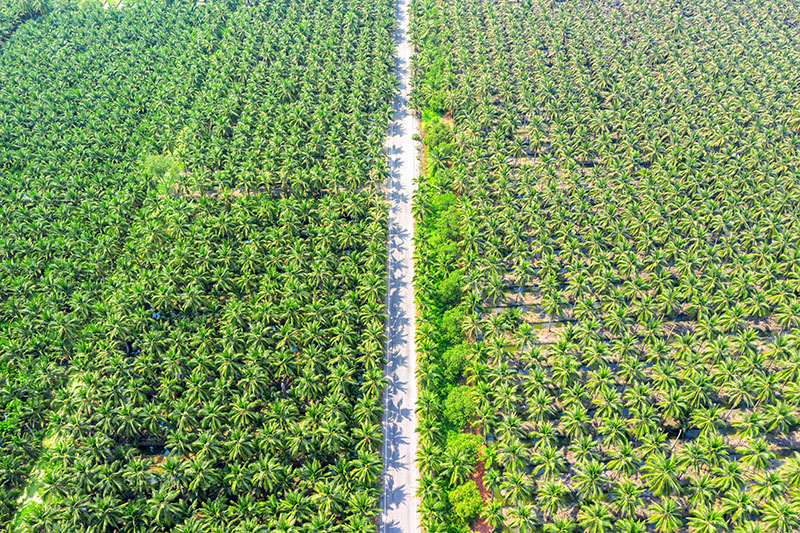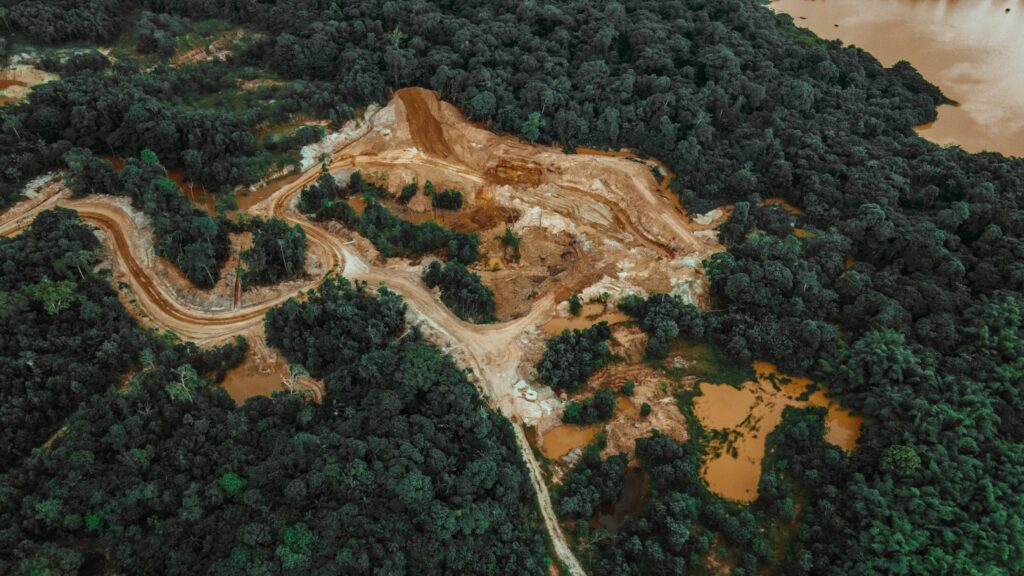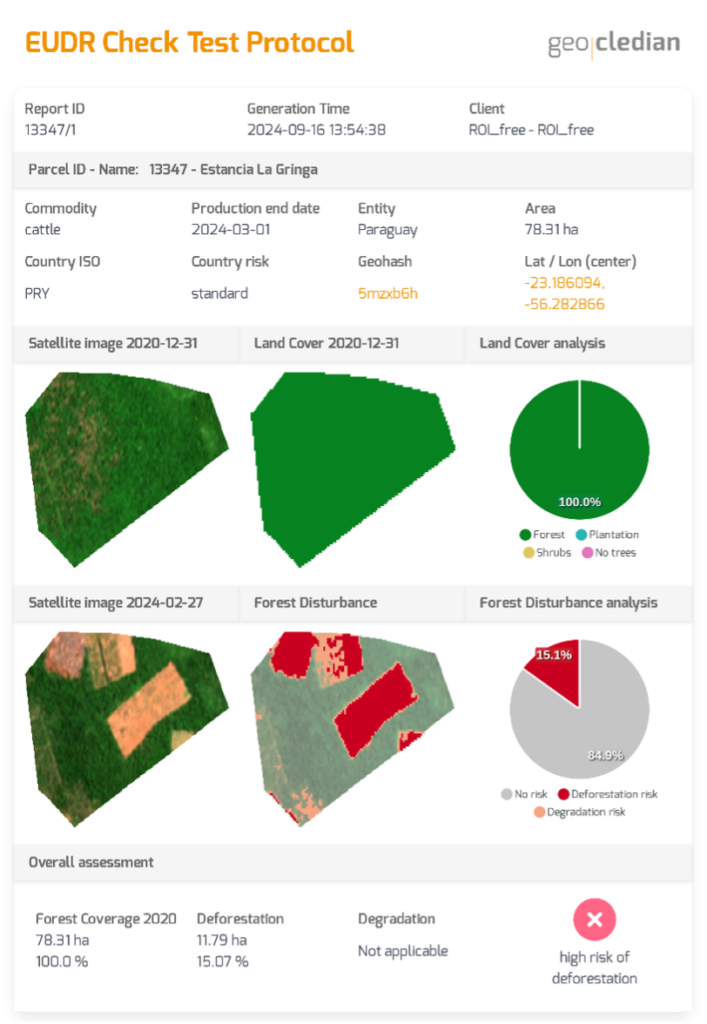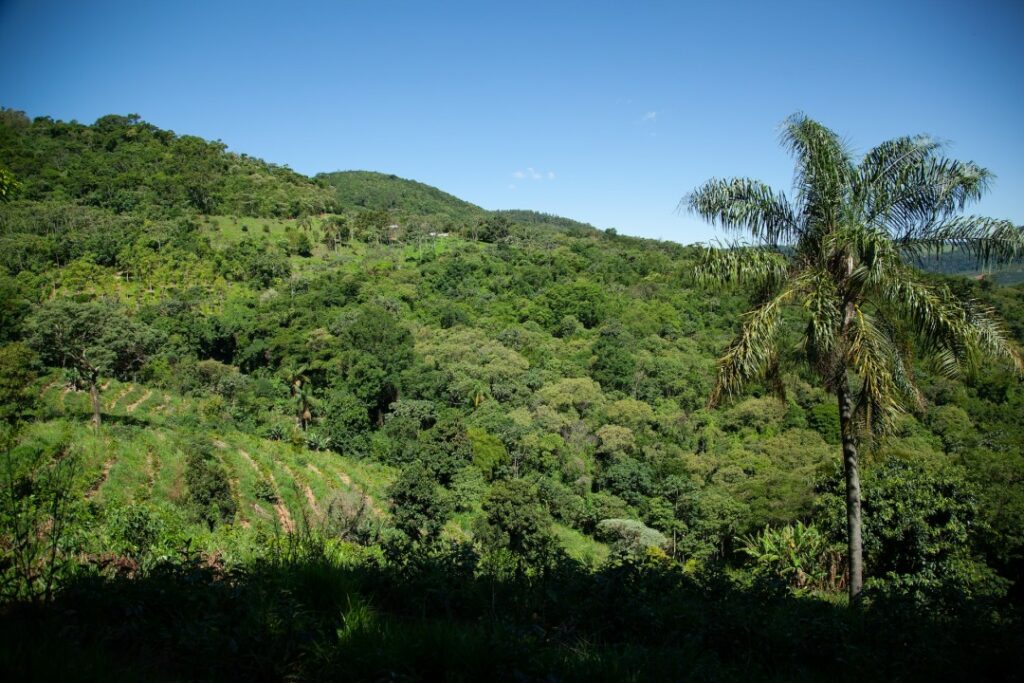The European Deforestation Regulation
Legal compliance
The EU regulation on deforestation-free products „EUDR“ sets due diligence requirements for operators and traders placing the relevant products on the EU market. Non EUDR compliance prevents operators from importing those products into the EU. The affected products are:
- beef, cocoa, coffee, palm oil, soy, wood, natural rubber and derived products like leather, furniture, chocolate

Operators and traders need to ensure that:
- In scope products must have not been produced on land deforested or degraded after 31 December 2020
- They have been produced in accordance with the laws of the country of production
- They are covered by a due diligence statement
Not meeting any of these three requirements will result in a prohibition to place those products on the EU market.
Important to know
Operator is any natural or legal person who, in the course of a commercial activity, places relevant products on the Union market or exports them from the Union market. This includes manufactures and traders alike regardless of size, however for SMEs simplifications may apply.
Deforestation free: The relevant products contain, have been fed with, or have been made using commodities that were produced on land that has not been subject to deforestation after December 31, 2020, or subject to forest degradation after December 31, 2020 in the case of wood.
The laws applicable in the country of production concerning a) land use rights, b) environmental protection, c) forest-related regulations including forest management and biodiversity conservation, d) labour rights, e) human rights protected under international law, the principle of free, prior and informed consent, and f) tax, g) anti-corruption, h) trade and customs regulations
The due diligence statement must include the geolocation of all plots of land where the relevant commodities were produced. Depending on the size of the land plots these have to be points or polygons defined by latitude longitude coordinates. They have to be submitted electronically as part of the due diligence statement.

The EUDR regulation comes into force 30.12.2024 but the EU Commission proposed to postpone it by one year until 30.12.2025. (Photo by Renaldo Matamoro on Unsplash)
EUDR Compliance – What We Offer
In accordance with the regulation we have developed an analytical product, called EUDR Check to support EUDR compliance. The core is a detailed deforestation risk assessment at plot level, providing auditable information based on remote sensing data and derived products. The plot level check is highly advisable when sourcing from high (or mid) deforestation risk regions in order to obtain objective proof of deforestation free production, but also to check the plausibility of the geolocation obtained from suppliers. In addition we assist in implementing EUDR reporting processes together with our partners.
How it Works
The EUDR Check requires a polygon or point coordinate together with the commodity type to be checked, as input. Based on this information it automatically calculates the deforestation risk. It is supported by quantitative land use change assessments. The information provided is auditable and the methodology transparent. The assessment is based on renown and validated datasets, recommended by the EU. Our methodology removes the short comings of these datasets by e.g. splitting the tree cover class into forest, plantation and shrubs to reduce false positives. The methodology includes:
- Land use analysis at cut-off date 2020-12-31, differentiating various agroforestry plantation types and shrubs from forest
- Various datasets to achieve most reliable results. Such as:
- Global land use data sets at 10m
- High frequency, high resolution satellite data (optical & radar)
- Auxiliar data such as canopy height
- Commodity specific models
- Change detection analysis for the exact harvest date to the baseline date
If the internal model detects a reduction of forest cover compared to the baseline date (30.12.2020) of the EUDR it will mark this polygon with a potential high risk of deforestation. The area deforested and the percentage of loss is given. For the commodity wood it carries out a plausibility check in addition, to validate the location and the amount of wood harvested.
The automated EUDR Check (Demo App here) currently supports all commodities required: coffee, cocoa, palm oil, soya, beef, leather, rubber, wood.

Your Benefits – Our Key Features
- EUDR Check test protocol providing reliable and fully auditable deforestation risk assessment
- All EUDR commodities supported, globally
- Low number of false alarms
- Fully automated for all plot sizes
- API based for easy integration into IT platforms

Our EUDR Check has many more interesting features like commodity specific models, multi level checks for geometries, batches and assessment of regional deforestation risk. We use high resolution (10m) satellite data to support small holder farming, we use satellite image time series that check the whole relevant period and offer 5 years storage of results. And of course, we consistently use the FAO forest definition (minimum mapping unit of 0.5ha and 5m tree height) and support the GeoJSON geometry format of EU.
The process is fully automated: after the polygon is registered and the processing is done you can retrieve the EUDR Check test protocol with a single request to our API. For more details see our FAQ page.
Next Steps
The EUDR Check will be constantly improved. The next updates will comprise:
- improved sensitivity of deforestation and degradation
- automated geometry validation and correction for suppliers
- additional risk information layers to support legal checking
- integration of very high resolution imagery
- integrated quality checking
- report generation for batches
Want to learn more? Contact us: EUDR@geocledian.com

